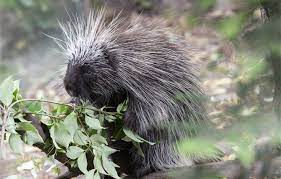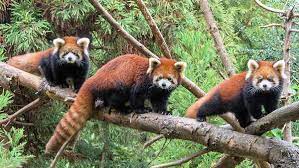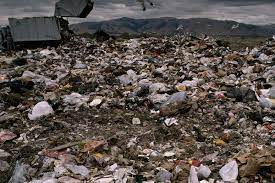Wildlife Prospect and Protecting Wildlife from Harmful Processes
The wildlife prospect is particularly varied because of the country’s location, size and the ecological zones. The lowland Rain Forest Ecological Zone is the richest zone in terms of biodiversity and the most valuable forest resources (FDF, 1998).
There are about 129 large mammal species in the rainforest and include African Elephants (Loxodontaafricana), African buffalo (Synceruscaffer) and hippopotamus (Hippopotamus amphibius).
Other large species include the large duikers (for example, cephabphusnigger) the Chimpanzee (Pan troglodytes), and the red river-hog (Potamachoerus porcus).
In the savannas, they include the hartebeest (Alcephalusbuselaphus) and warthog (Phacochoerusaethiopicus).
In areas of derived savannah, forest species such as elephants and chimpanzees may be observed foraging on food crops adjacent to the forest.
There are also a wide variety of small mammals including the grass cutter (Thryonomys swinderianus), giant rats (Cricetomys spp.), tree squirrels (Funisciurus spp.) and a range of primates.
Indeed there are 123 species in the Guinea savannas while 35 species of bats, 23 species of rodents and 20 species of carnivores among others are represented in the country.
The lowland rain forest zone also provides habitat for about 200 species of birds. The effect of population pressures on this wildlife is very profound as they are indiscriminately hunted for food and trophy.
Protecting Wildlife from Harmful Processes
Wildlife conservation does not only entail the protection of species or of their habitats from activities directly affecting them (such as off-take and trade), but also protecting them from activities that may indirectly impact on them in a negative way.
This is the case of industrial developments, construction, tourism and mining operations that may result in a serious disturbance to wildlife species or in the destruction of their habitat.
In addition, competing land uses (forestry or agriculture) may also affect wildlife, and usually different pieces of legislation may regulate in different (and sometimes conflicting) ways their impacts on wildlife.
This is in recognition of the fact that actual or potential effects of human activities may concern adjacent or other ecosystems.
Indeed, in accordance with the Convention on Biological Diversity, countries are required to identify and control all potential sources of adverse impacts on biodiversity, and to carry out environmental impact assessments of projects likely to have “significant adverse effects” on biodiversity.
Read Also : Forest Industries and Wildlife Prospect
Regulating Different Types of Wildlife Use and of Hunting
According to the ecosystem approach, the objectives of sustainable use should be determined in order to provide policy guidance, and inform management and planning.
Defining and regulating different types of wildlife use including hunting (i.e., subsistence/cultural, recreational, and scientific) and non-hunting uses (such as eco-tourism, game ranching and breeding) is common in regulatory schemes, but regrettably rarely useful.
The most frequent problem is the failure to make a connection between the defined types of use, the procedural mechanisms that implement them, and the associated values, quotas, and areas where they may take place.
Accurately Identifying Game and Non-game Species
To avoid confusion, international best practice dictates that hunting legislation should specifically identify (using common names and scientific names) not only what can be hunted, but also what cannot. Many hunting regulations use only common names and catch-all categories that can result in confusion and possible management gaps.
This is especially true for birds where catch-all categories such as “waterfowl” or “ducks and geese” are used to regulate hunting of all birds that fall within that category.
In either of these examples, the category includes several species some of which may be globally threatened and/or listed in a particular country as endangered.
A failure to make the necessary distinctions may inadvertently result in legally authorizing the take of species not intended by the drafters.
Read Also : Forest Industries and Wildlife Prospect
Endangered Animals
Endangered animals are species that are seriously at risk of extinction. They are categorized as likely to become extinct. Endangered (EN), as categorized by the International Union for Conservation of Nature.

The following are some animals in that are rated as Endangered (EN) or Vulnerable (VU) as contains in the 2004 IUCN Red List of Threatened Animals.
They are: Chimpanzee, Crested Genet, Dama Gazelle, Giant African Water Shrew, Cross River Gorilla and the Hartwig’s Soft- furred Mouse.
Sustainable Use
The law plays a fundamental role in regulating different uses of wildlife and ensuring that these are sustainable.
Besides the need for accordance with management planning, there are several specific legal tools that can be used to ensure sustainable use by regulating hunting, recreational, traditional/subsistence and scientific use of wildlife, as well as trade.
These tools include the use of administrative instruments (quotas, licenses/permits and concessions) or contractual arrangements (agreements) to be adapted on a case-by-case basis, as well as general provisions on the regulation of the quantity, time and methods for specific uses.
In summary, due to the anthropogenic activities of man and a very weak non- enforceable forest and wildlife policies and laws, the fate of wildlife species is bleak as can be seen of some of the wild animals, being either threatened, endangered or going into extinction.
Read Also : The Production and Marketing of Bush-Meat



